-
 Simple and Easy-To-Create Pongal Kolam Designs To Decorate Your Home Traditionally
Simple and Easy-To-Create Pongal Kolam Designs To Decorate Your Home Traditionally
-
 This Diwali, Prepare to Welcome Goddess Lakshmi with a Mix of Traditional and Contemporary Décor: Unique Diwali Decoration Ideas for Your Home to Make It Look Spectacular Like Never Before! (2020)
This Diwali, Prepare to Welcome Goddess Lakshmi with a Mix of Traditional and Contemporary Décor: Unique Diwali Decoration Ideas for Your Home to Make It Look Spectacular Like Never Before! (2020)
-
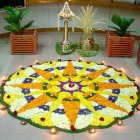 Creating Pookalams is One of the the Most Important Rituals of Onam: Make it Special with these Beautiful Onam Pookalam Designs (2020)!
Creating Pookalams is One of the the Most Important Rituals of Onam: Make it Special with these Beautiful Onam Pookalam Designs (2020)!
Why is Onam Celebrated?
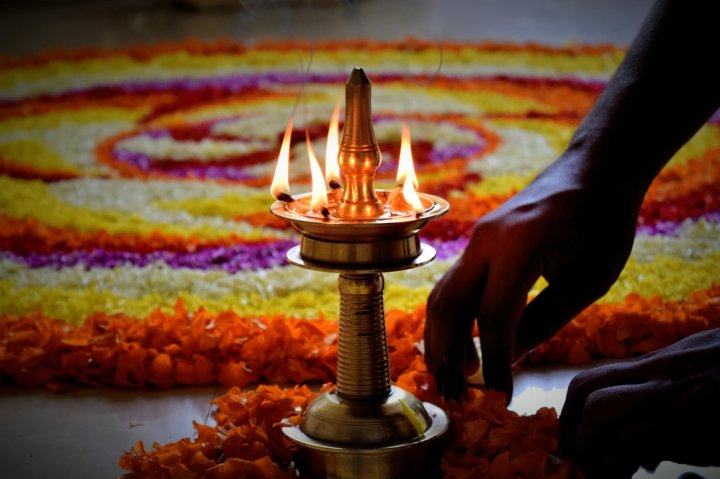
Onam is a harvest festival that is predominantly celebrated in Kerala. According to the Gregorian calendar, it is celebrated in the month of August or September. However, according to the Malayalam calendar, it is celebrated in the Chingam month. The harvest festival is celebrated for a period of ten days. The festival is associated with Lord Vishnu and King Mahabali who was vanquished to the underworld by Lord Vishnu himself. Onam is celebrated with much fanfare and pomp all over the world by Malayalis. The major attractions of the Onam celebrations are pookolams, Onam sadya, Onam boat race, elephant processions, and folk dances.
The Onam Sadya
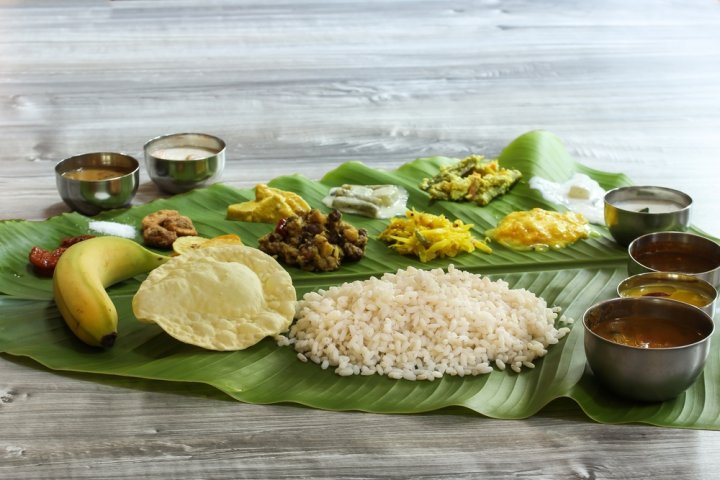
The Onam sadya a traditional fare that marks the Onam festivities and it is a vegetarian meal. The Onam sadya is prepared with fresh vegetables and fruits. The traditional vegetarian meal is served on a banana leaf. The meal usually consists of nine courses with avial, chips, Kerala rice, sambhar, rasam, kaalan, thoran, mezhukkupurati, kichadi, pachadi, pickles, and payasam. However due to their popularity, many of the restaurants serve up to 30 dishes in the banana leaf and captures the culture of the state.
10 Delicious Onam Recipes to Make at Home
You make the Onam sadya recipes easily at home. Here is a list of recipes you can make for the traditional fare.
1. Olan Recipe

2. Avial Curry

3. Kalan Kerala Curry Recipe

4. Ulli Theeyal Recipe
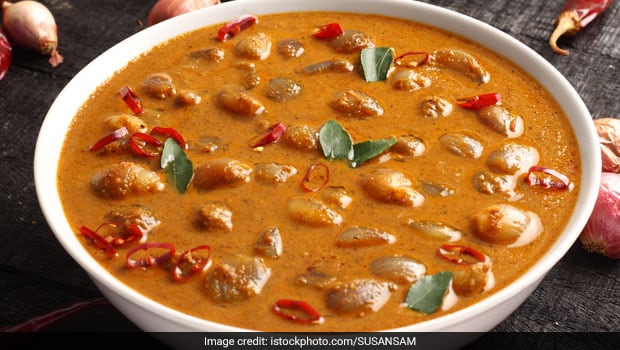
5. Cabbage Thoran

6. Vellarikka Moru Curry
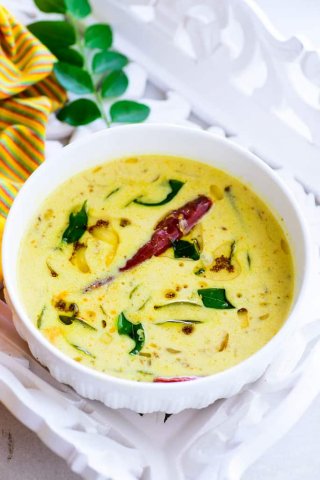
7. Vendakka Pachadi

8. Kerala Style Sambar
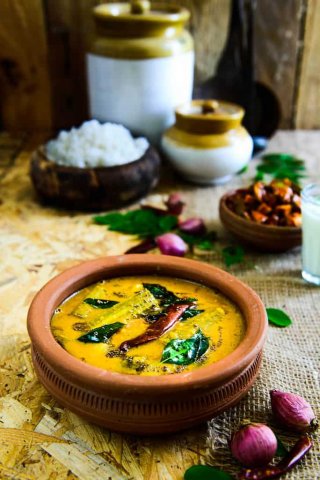
9. Paal Payasam

10. Mambazha Pradhaman

Legend and Significance Behind Onam
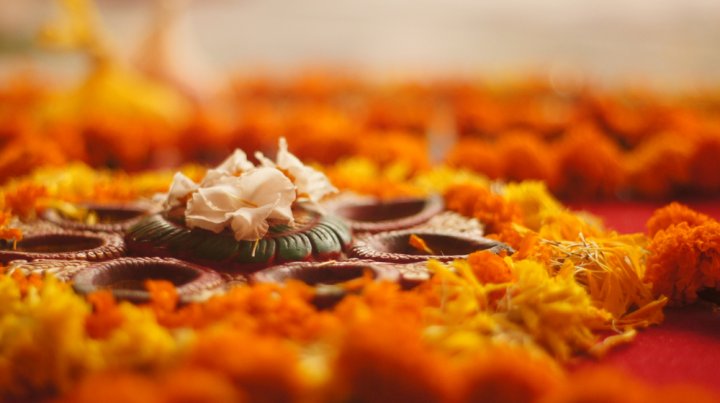
According to Hindu mythology, King Mahabali was an asura and an ardent devotee of Lord Vishnu. King Mahabali was the grandson of Prahalada and son of Virochana. Legend has it that Kerala witnessed a golden era under his regime. The people of his kingdom were extremely happy and thrived under his rule. When he was a child, he was taught the Vedas by his grandfather Prahalada and later by Shukracharya. With the help of Shukracharya, he obtained control over three worlds. Moreover, Mahabali defeated Indra and other devas. To ascertain his continued control over the three worlds, he was advised to perform 100 Ashwamedha Yagna by his teacher. The devas and mother of Indra, Aditi approached Lord Vishnu to defeat him.
As per her wish, Lord Vishnu was born as her son by taking the Vamana avatar. Meanwhile, during this period, King Mahabali had completed 99 Ashwamedha Yagna and was preparing to perform the final yagna. However, before the yagna can be performed, a small boy who is a disguise of Lord Vishnu approached him. Overcome with love for the little boy, King Mahabali asked the little boy to ask him for a wish.
The little boy asked to possess three steps of land that his feet can cover. However, the boy grew very tall and conquered heaven and earth with his two steps. However, he looked at King Mahabali and the king offered his head for the third step. He was pushed into the underworld and vanquished from the kingdom. Lord Vishnu moved by his devotion, allowed him to visit his kingdom once in a year to see his people. Thus, every onam King Mahabali is believed to visit Kerala to see his kingdom and to see the happiness of his subjects.
Ten Days of Onam

The festival of Onam is celebrated for ten-days with each day representing a specific activity.
- Day 1 (Atham): believed to be the day on which who starts preparation to head towards the earth and marked by drawing the Pookolam.
- Day 2 (Chithira): for the second day, people add extra layers of Pookolam and start cleaning their houses.
- Day 3 (Chodi): people start shopping for the festival by buying the essentials required for the celebrations.
- Day 4 (Vishakam): marks the beginning of several competitions held during Onam such as folk dance, elephant processions and much more.
- Day 5 (Anizham): the famous Kerala boat race is flagged off on this day.
- Day 6 (Thriketa): people visit the temple and provide offering and seek the blessings of the gods.
- Day 7 (Moolam): Onam sadya is prepared and dances are conducted all over the state.
- Day 8 (Pooradam): statues of Lord Vishnu and King Mahabali are kept in the middle of the Pookalam.
- Day 9 (Uthradom): believed to be the day on which King Mahabali visits the kingdom and people offer fresh fruits and special dishes.
- Day 10 (Thiruonam): the final day of the celebrations on which the king visits the people.
Celebrations, Rituals and Practices Followed
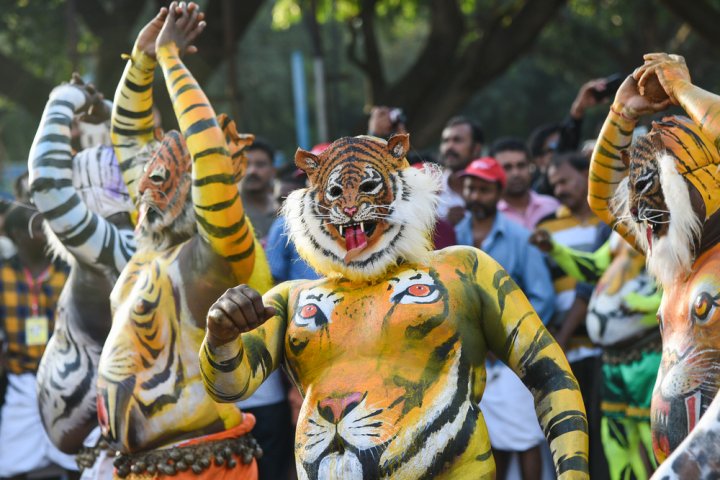
• The festivities are marked by people buying new clothes for the entire family. The men wear Onam pattu veshti whereas the women wear traditional Onam saree that is white with a golden border.
• People install statues of Lord Vishnu in Vamana avatar and also of King Mahabali in the middle of Pookolam.
• People decorate the pookolam with traditional earthen diyas and also in temples.
• Women sing and dance around the pookolam by chanting praises to King Mahabali.
Major Attractions of Onam Celebrations
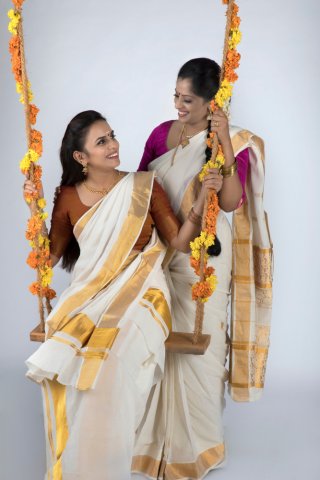
- Pookkalam: designs made with different types of flowers in front of the gate or in the living room. As the number to days increase, a new layer is added to the pookolam until the final day of the celebrations.
- Onasadya: a grand and a traditional meal that is prepared during Onam. The special meal called Onam sadya is a nine-course meal that is served on a traditional banana leaf.
- Onakalikal: signifies the games that are played during the festival of Onam. The traditional pookolam, dance and other games are played during the ten-day festivities.
- Vallamkali Boat Race: also known as snake boat race is the most famous festival held during Onam festivities. Around, hundreds of boatmen compete with each other to win the boat racing competition. The boat race festival attracts thousands of tourists from all over the world.
- Elephant Procession: elephants are decorated with flowers, gold ornaments, and sandalwood. The elephants proceed over the city where people seek the blessing form the elephants and offer fruits to the animals.
- Folk dances: Kathakali the state dance is performed all over the state. Also, a clap dance named Kaikottikali is performed by women in the family around the pookolam. They dance and sing praise to King Mahabali to invoke his blessings.
-
 Want to Pamper Your Taste-Buds this Pongal? Here are Mouth-Watering Pongal Recipes You can't Miss in 2019
Want to Pamper Your Taste-Buds this Pongal? Here are Mouth-Watering Pongal Recipes You can't Miss in 2019
-
 This Festive Season Spread Happiness with 11 Special Diwali Gift Packs (2019)
This Festive Season Spread Happiness with 11 Special Diwali Gift Packs (2019)
-
 भारतीयों का मिठाई के लिए एक विशेष झुकाव है: 10 सबसे स्वादिष्ट भारतीय मिठाइयाँ विकल्प जिन्हे देख कर आपके मुंह में पानी आ जायेगा (2019)
भारतीयों का मिठाई के लिए एक विशेष झुकाव है: 10 सबसे स्वादिष्ट भारतीय मिठाइयाँ विकल्प जिन्हे देख कर आपके मुंह में पानी आ जायेगा (2019)
-
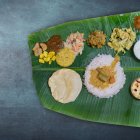 Bring the Flavours of Onam Sadhya to Your Kitchen! List of 10 Onam Sadhya Dishes Which Are As Easy to Make As They Are Delicious to Eat (2019)
Bring the Flavours of Onam Sadhya to Your Kitchen! List of 10 Onam Sadhya Dishes Which Are As Easy to Make As They Are Delicious to Eat (2019)
-
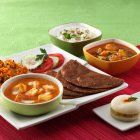 Fasting Does Not Mean Starving! Keep Your Energy Up with These 9 Delicious Navratri Recipes & Fasting Tips for Navratri (2019)
Fasting Does Not Mean Starving! Keep Your Energy Up with These 9 Delicious Navratri Recipes & Fasting Tips for Navratri (2019)
Draw the line at being over ambitious
Sitting down with friends and family for a homemade Onam sadya is a wonderful experience, and while it is nostalgic and comforting, the tradition began at a time when many members of the family prepped and cooked for days. Pulling that off single handedly, or with little help, is a monumental feat but ill-advised as it will be exhausting. Make a few things so you have the experience without creating a recipe for disaster. However, if you can pull in neighbours and friends to create the gastronomical feat together, we say go for it!

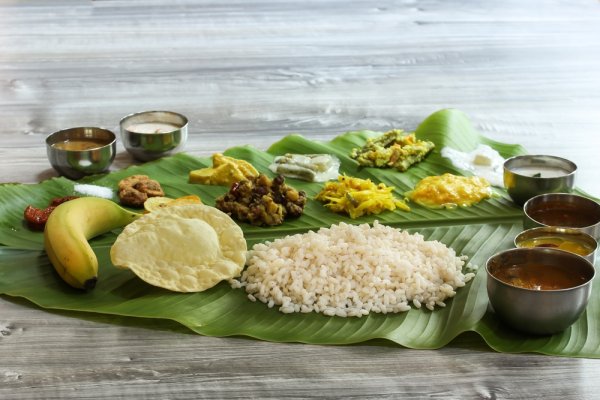


 Highlight the Best Facets of Your Incomparable Beauty: Discover the Best Face Highlighter Currently Available in India and Everything You Need to Know About Using Face Highlighters for Maximum Effect (2023)
Highlight the Best Facets of Your Incomparable Beauty: Discover the Best Face Highlighter Currently Available in India and Everything You Need to Know About Using Face Highlighters for Maximum Effect (2023)
 Forget the Blemishes and Get that Picture Perfect Flawless Radiance on Your Face: Check out the Best Foundations for Oily Skin Currently Available in India and Everything You Need to Know About Makeup Foundations (2023)
Forget the Blemishes and Get that Picture Perfect Flawless Radiance on Your Face: Check out the Best Foundations for Oily Skin Currently Available in India and Everything You Need to Know About Makeup Foundations (2023)
 Make Your Presence Felt Wherever You Go: Discover the Best Perfumes Under 2000 for Both Men and Women to Announce Your Arrival and Make Any Occasion Memorable (2023)
Make Your Presence Felt Wherever You Go: Discover the Best Perfumes Under 2000 for Both Men and Women to Announce Your Arrival and Make Any Occasion Memorable (2023)
 Protect Your Oily Skin from the Harmful Rays of the Sun: Discover the Best Gel Based Sunscreens for Oily Skin and Everything You Need to Know Before Buying One (2023)
Protect Your Oily Skin from the Harmful Rays of the Sun: Discover the Best Gel Based Sunscreens for Oily Skin and Everything You Need to Know Before Buying One (2023)
 Minor Blemishes and Wrinkles Affecting Your Confidence? Check out the Best BB Creams to Conceal Your Worries and Nourish Your Skin to Restore the Healthy, Radiant and Glowing Complexion Back Again (2023)
Minor Blemishes and Wrinkles Affecting Your Confidence? Check out the Best BB Creams to Conceal Your Worries and Nourish Your Skin to Restore the Healthy, Radiant and Glowing Complexion Back Again (2023)
